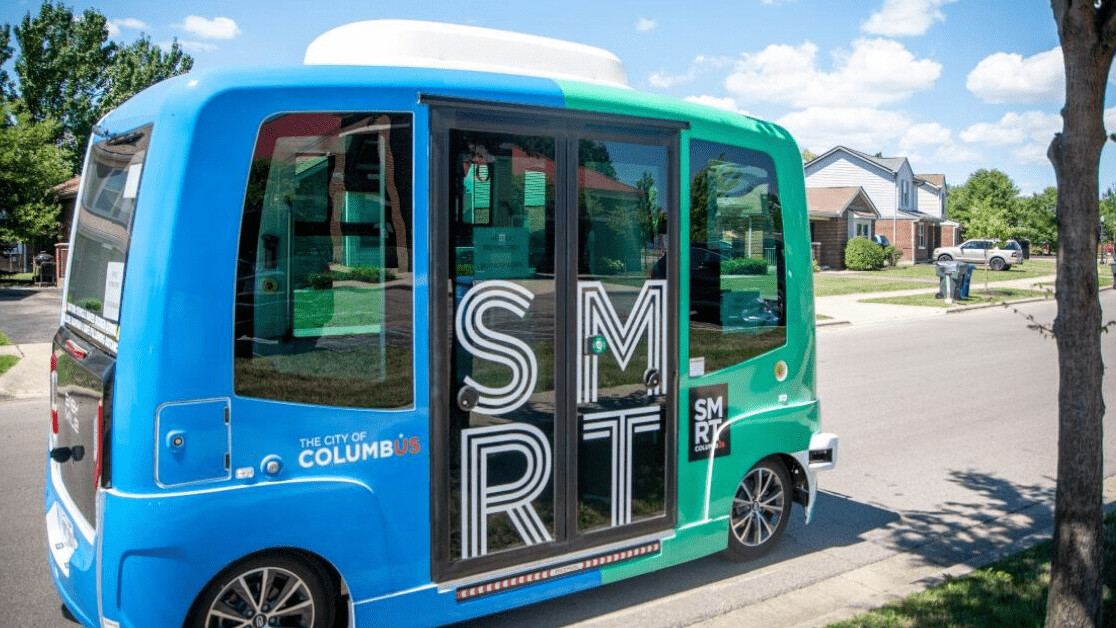
This article was originally published by Sarah Wray on Cities Today, the leading news platform on urban mobility and innovation, reaching an international audience of city leaders. For the latest updates follow Cities Today on Twitter, Facebook, LinkedIn, Instagram, and YouTube, or sign up for Cities Today News.Three smart mobility pilots have been launched in the Linden area of Columbus, Ohio.
Between now and March 2021, the city will trial smart mobility hubs for first and last-mile transport, and connected vehicle technology to boost road safety. The electric, self-driving Linden LEAP shuttle is also being recommissioned to deliver food assistance, after passenger service was put on hold in February due to a braking incident.
The projects, which are run through the Smart Columbus regional smart city initiative, are funded by the US$40 million US Department of Transportation (USDOT) grant awarded to Columbus as the winner of the 2016 Smart City Challenge.
“Columbus won the Smart City Challenge because we had the vision and ambition to try new mobility technologies in a neighborhood to address the daily challenges residents face,” said Mayor Andrew J. Ginther. “Today, that vision comes to life. These mobility pilots in Linden will bring food to neighbors in need, connect residents to reliable and affordable mobility options, and help vehicles travel through the neighborhood more safely.”
Linden LEAP
Food assistance organizations have seen a surge in demand during the pandemic. St. Stephen’s Community House in Linden, for instance, reports that in April alone, its food pantry served 959 new households, a 461 percent increase over the same time last year.
An EasyMile LEAP shuttle will be used to transport pre-packaged food boxes from St. Stephen’s Food and Nutrition Center to the Rosewind Community Center. A trained operator will be on board but no passengers.
Sharad Agarwal, Senior Vice President of EasyMile, said: “We are proud to be able to show the potential of our technology and how it can be leveraged to address emerging community needs like food insecurity through the delivery of food pantry boxes.”
The Linden LEAP buses have been out of passenger service since February following an incident where a shuttle stopped suddenly, resulting in a woman falling from her seat.
In May, following an evaluation, the National Highway Traffic Safety Administration (NHTSA) outlined conditions to lift a temporary suspension on allowing members of the public to ride the EZ10 shuttles. EasyMile’s Passenger Safety Enhancement plan includes adding seat belts to shuttles; increasing awareness about sudden stops by adding signage and audio enhancements; and training safety operators to remind passengers to hold on.
Columbus says it is regularly assessing the situation to decide when passenger services on the Linden LEAP may resume, based on several criteria including a request for reinstatement being submitted by the vendor and accepted by NHTSA.
Smart mobility hubs
New Smart Mobility Hubs in Columbus will provide first and last-mile options to users of the city’s Bus Rapid Transit line. The hubs aggregate multi-modal first mile/last mile solutions at six locations, aiming to make traveling easier and more affordable. Mobility options at each hub are unique to that location and include different combinations of conventional and e-bikes from the CoGo bike-share scheme, scooter and EV charging, ride-hail pick-up/drop off points, and dockless scooter, bike, and car-share parking.
Each hub will have an IKE interactive digital kiosk to provide free Wi-Fi, access to the Pivot multi-modal trip planning application, and directory listings of nearby restaurants, shops, activities, social services and other resources. The kiosks also display community content, public service announcements and public art, and include an emergency call button.
For the third pilot, Smart Columbus will trial how connected vehicle technology can improve road safety safety in the Linden area, which is home to seven of the 100 intersections that experience the highest volume of car crashes in central Ohio.
The city is calling for 500 community volunteers to have connected vehicle technology from Siemens Mobility installed in their cars. These will be matched by up to 750 public vehicles including the City of Columbus fleet, Fire and Police vehicles, Central Ohio Transit Authority (COTA) buses, Franklin County fleet vehicles, and ODW Logistics freight trucks.
The equipment will provide real-time safety alerts intended to help drivers make more informed decisions. The seven-month study will assess the impact of the technology on driver safety, based on anonymous data collected from vehicles traveling along certain roads.
Training
“Siemens Mobility is proud to be part of this effort to bring the safety and personal mobility benefits of connected vehicle technology to the drivers of Columbus,” said Marcus Welz, President of Intelligent Traffic Systems for Siemens Mobility in North America. “This is a technology which has been effectively used in mega-cities like New York, or downtown Tampa in Florida. Columbus is a great city to take advantage of this innovative technology, and its representative size, density and recent growth make it an ideal template for other similar cities to learn from.”
In addition, Smart Columbus is looking for up to ten people interested in becoming a Connected Vehicle Technician In-Training during the study. Participants will complete a paid training course and be placed at a local site to install the connected vehicle technology in public and private vehicles.
“Advanced vehicle technology like connectivity is increasingly becoming standard on new vehicles,” said Columbus City Council Member and Public Service Chair, Shayla Favor. “Through this study, we hope to not only keep drivers safer on our streets, but also create an immersive training experience that will help our local auto shops and technicians learn the ins and outs of this new technology with future applications in our cars and on our roadways.”
Pilot results will be published in May 2021. Assessment of the program will incorporate technical data as well as survey feedback from residents.
Get the TNW newsletter
Get the most important tech news in your inbox each week.





